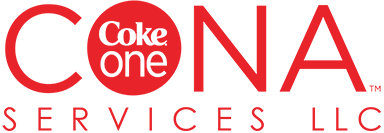
Coca-cola is among the world’s most iconic brands. In this episode, I sit down with Saurabh Parikh who leads data and innovation at CONA Services, which supports the largest Coke bottlers in North America. Saurabh describes how the firm delivers analytics solutions against today’s opportunities, while also keeping a sharp eye on all of the areas to improve and innovate for the future. He shares a well-tested organizational model that balances the needs of both data management and analytics, and keeps new ideas flowing through the organization.
Key Takeaways
Describe your title and role.
My title is Chief Data and Innovation Officer. I oversee about 100 people between our full-time associates, contractors, and project team members from our delivery partners team.
Where does the analytics function sit in the organization and who does it report into?
I report to the CEO of our company.
Is that the right place for the analytics function to report?
Given how we are structured, I believe this works for us. We are uniquely structured since we spun off from the spinoff of Coca Cola company in 2016. We provide IT services to the 11 largest bottlers in North America. In a sense, we are an IT organization but in a co-op model. Since we are independent, we have to manage our own finances, procurement, HR, etc.
Often where analytics is placed is a good indication of management's view of the role that analytics should play as a driver or enabler of business strategy. To me, what's more important is whether the charter for the analytics team is clear. Are they empowered to drive the kind of outcomes their organization hopes to achieve? Is there a leader with end-to-end accountability to achieve that? Outcomes are delivered in the field, not in the back office or IT. So, you've got to partner with the right business leader. At the same time, the right technology partnership is important to allow scaling from the platform, support, and operation standpoint.
Describe the organizing model you have adopted for analytics.
We have three teams underneath our data and innovation organization. One is master data that provides the core foundation for processes, applications, and reporting. They build and maintain our governance processes and data standards, and implement toolsets to efficiently manage the life cycle of our key master data entities. This is the team that enables one source of truth.
Then we have a BI team that's responsible for managing our enterprise data platform. The BI team sources data from AARP and many other apps, brings the data into our data platform, and supports reports and dashboards. We have an extensive self-service implementation that allows us to share common platforms, data, and reporting infrastructure with our bottlers, while also providing flexibility so they can bring in their own data, create new data models, and manage their own reports, dashboards, and apps.
The last one is the innovation team, and that's focused on creating new business growth capabilities. The innovation team works closely with our senior business leaders to identify, build, and market-test innovation ideas. The majority of the work in the innovation space is data science. The innovation team operates like a startup and is designed to unlock value at a much different speed and with a higher tolerance for failure than operations.
What are four or five important qualities and behaviors of analytics leaders?
- Business focus. Understand the industry you're in, including business strengths and opportunities, which help build a view of what's important. You may have a great platform and data, but unless you can drive change management to convert insights into actions and value delivery, it's really difficult, so business focus is important.
- Understanding technology. There is a lot involved in delivering outcomes. Analytics leaders need to understand the data platform, and how it all integrates. People want you to apply AI to every use case even when it's not needed. So having an understanding of how to approach various business problems is important.
- Continuous learning and teaching. With its evolving and maturing landscape, this applies more to analytics than any other space I can think of. Not just learning, teaching is also important. Real outcomes are achieved when more groups get involved and excited to help your company become a data-driven organization.
- Ability to articulate complex solutions in simple terms. This is the ability to customize your message based on the audience. You can't expect the broader organization to understand data science terminologies. In fact, we made it look so easy that our business partners felt it wasn't much work. Now our team likes to throw in "R-squared" and "neural networks" and data science jargons that many don't understand. But I see them getting fascinated by that, and it helps develop appreciation for the work
How do you measure performance and success when it comes to analytics?
We try to track value based on projects. Our typical project starts with an idea. Unless there is material return on our investment, we don't pursue an idea. With experimentation, we get more clarity on how feasible an idea is, which helps build a perspective on long-term cost. By testing it out with a couple of bottling organizations, we get more validation of real value that can be achieved. We have a good process and discipline around tracking value. In some cases, using our master data foundation and BI. We also have defined metrics around data sets, data quality, scope, project timeline, etc. Those are tied to our leadership and middle management teams, and their incentive structures. So, we have several ways of tracking whether we're making a difference to the organizations that we serve.
For more insights from Saurabh, listen to the full podcast.